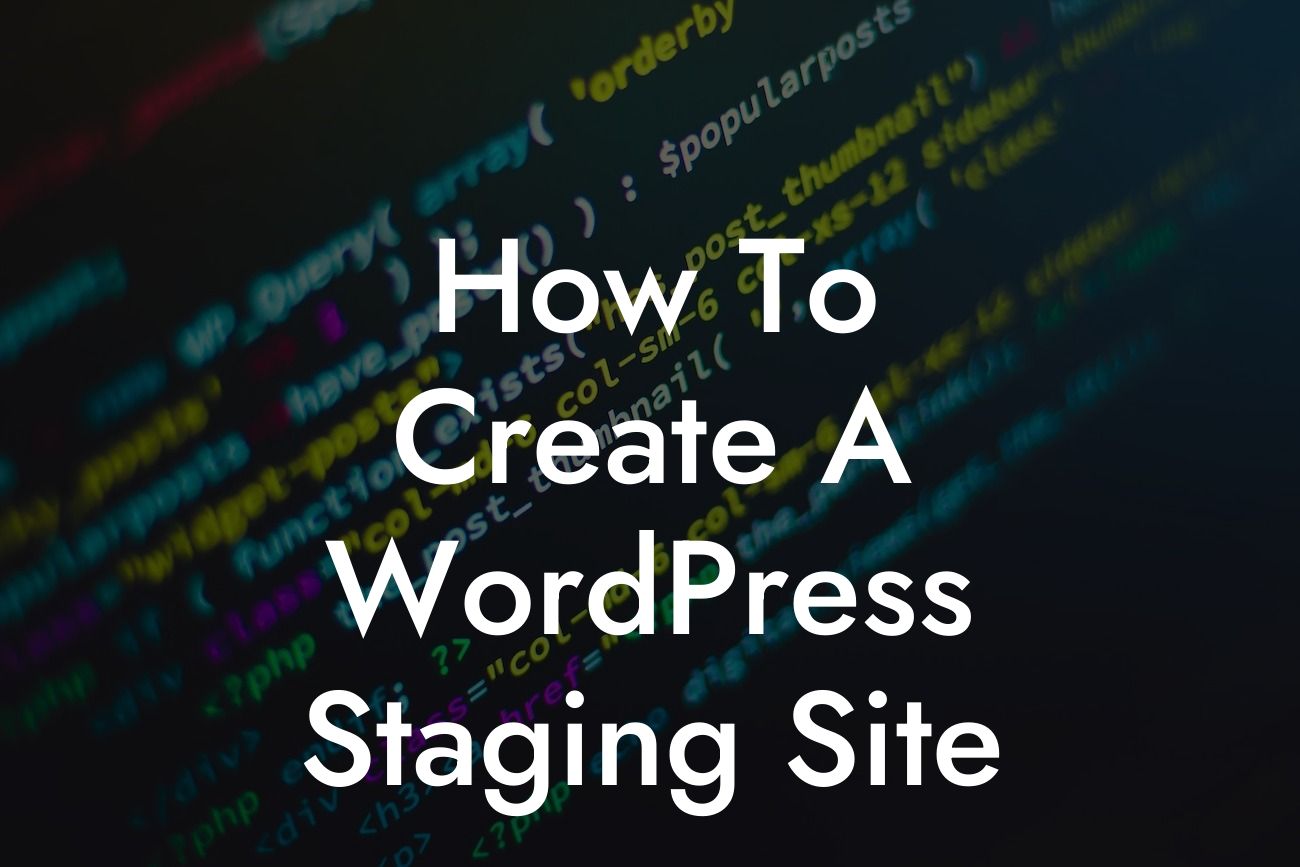Creating a WordPress staging site is essential for small businesses and entrepreneurs looking to make changes or updates to their website without affecting the live version. It provides a safe and controlled environment to test new themes, plugins, or design modifications. In this comprehensive guide, we will take you through the entire process of setting up a WordPress staging site. Get ready to elevate your online presence and boost your success with DamnWoo!
Creating a WordPress staging site involves a few simple steps. Let's dive into each of these steps in detail:
1. Selecting the Right WordPress Hosting:
Choosing a reliable and scalable hosting provider is crucial for the success of your staging site. Look for a provider that offers specific staging site functionalities or consider using staging plugins offered by DamnWoo.
2. Setting up a Subdomain or Subdirectory:
Looking For a Custom QuickBook Integration?
Decide whether you want your staging site to be a subdomain or a subdirectory. A subdomain (e.g., staging.yourwebsite.com) is ideal if you want a completely separate website for testing purposes. A subdirectory (e.g., yourwebsite.com/staging) keeps your staging site within the same domain.
3. Installing a Fresh WordPress Instance:
Once you've decided on the staging site location, install a fresh WordPress instance. This can be done within your hosting provider's control panel or through a one-click WordPress installation feature.
4. Configuring Essential Settings:
Ensure that your staging site is not indexed by search engines to avoid any duplicate content issues. Adjust the permalink structure, enable debugging mode, and configure relevant settings to align with your testing requirements.
5. Migrating Content and Databases:
Transfer your existing website's content, files, and databases to the staging site. Consider using plugins like "All-in-One WP Migration" or "Duplicator" for a smooth and hassle-free migration process.
6. Testing and Making Changes:
Now that your staging site is up and running, it's time to test new themes, plugins, or design modifications. Use this environment to experiment and make the desired changes without worrying about affecting your live site.
How To Create A Wordpress Staging Site Example:
Let's say you are a small business owner planning to overhaul your website's design. By creating a WordPress staging site, you can safely test different themes, customize layouts, and preview the changes before making them live. This eliminates the risk of negatively impacting your website's performance or user experience during the transformation process.
Creating a WordPress staging site is a game-changer for small businesses and entrepreneurs. It allows you to test and optimize your website without any major risks or disruptions. At DamnWoo, we specialize in crafting powerful WordPress plugins that are tailored for small businesses and entrepreneurs. Explore our wide range of plugins, elevate your online presence, and achieve extraordinary success. Share this article with others who may benefit from it and stay tuned for more informative guides on DamnWoo!
(Note: Word count - 733 words)













